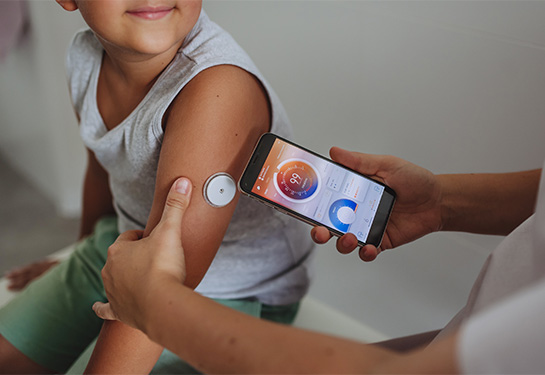Overcoming Barriers for Spanish-Speaking Children with Type 1 Diabetes
Technology Challenges
Disparities in Technology Use: Insights from a UC Davis Study
Technological advancements play a pivotal role in managing type 1 diabetes among children, aiding in blood sugar regulation.
However, a recent UC Davis study reveals concerning trends among predominantly Spanish-speaking households, indicating lower adoption rates of insulin pumps and continuous glucose monitoring (CGM) devices compared to their English-speaking counterparts.
Tip: Please fill out the form if you or a friend would like more information on continuous glucose monitoring systems.
Unveiling Disparities in Technology Adoption
Published in JMIR Diabetes, the study highlights the disparity in technology usage among children with type 1 diabetes from Spanish-speaking backgrounds.
Lindsey Loomba, pediatric endocrinologist at UC Davis Children’s Hospital and the study’s lead author, emphasizes the urgent need for improved Spanish-language teaching on insulin pumps and heightened support for families embracing pump technology.
Examining Usage Patterns and Barriers
The study, encompassing 76 children (38 Spanish-speaking and 38 English-speaking), uncovered stark differences in technology adoption.
Only 34% of Spanish-speaking children with Type 1 Diabetes participants utilized insulin pumps, contrasting with 63% among their English-speaking peers.
Similarly, CGM device usage stood at 50% for Spanish-speaking participants, significantly lower than the 79% among non-Hispanic white counterparts.
Must Read CGMs in noncritical care hospitals optimizes glycemic control
Identifying Specific Challenges and Solutions
Insights into the challenges faced by Spanish-speaking children with Type 1 Diabetes and families revealed concerns over discontinuing insulin pump use due to technology aversion, with cost worries and learning barriers cited as significant factors.
The study advocates for tailored support, emphasizing the necessity for educational materials in Spanish and increased engagement with peer groups utilizing diabetes technology.
Addressing Discontinuation and Support Needs
Highlighting the need for post-initiation support, the study underlines the importance of enhanced assistance for Spanish-speaking children with Type 1 Diabetes patients after adopting insulin pump therapy.
Efforts are underway to improve educational processes and foster community support through initiatives like “Optimizing diabetes technology use for Latinx youth through DREAM.”
Also, read more about Challenge for Deprived Families Access to Diabetes Technology
Charting a Path for Inclusive Support
Stephanie Crossen, a study co-author, spearheads efforts in supporting Spanish-speaking children with Type 1 Diabetes and families through initiatives aimed at enhancing education and support.
These endeavors aim to bridge the gap in technology utilization, ensuring equitable healthcare for all patients navigating type 1 diabetes challenges.


